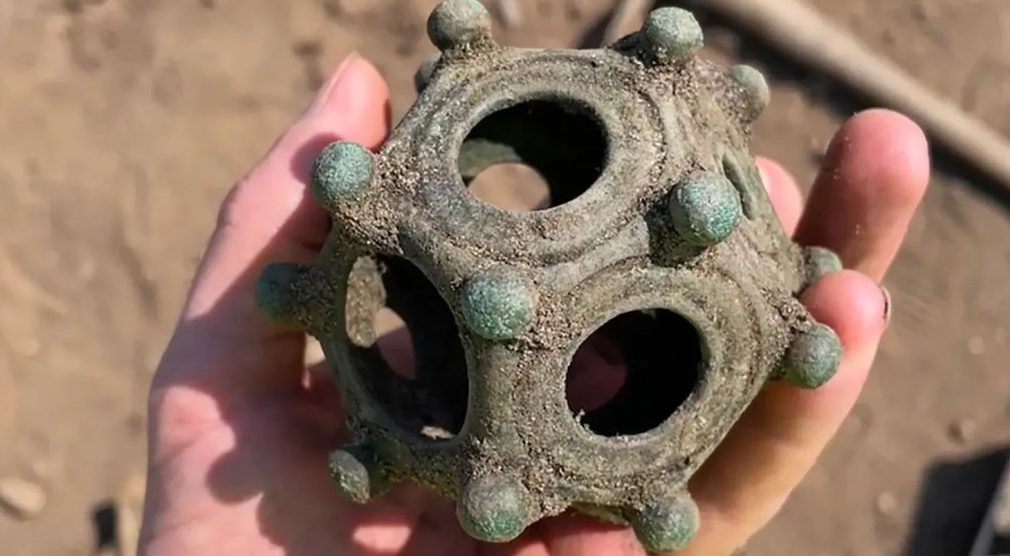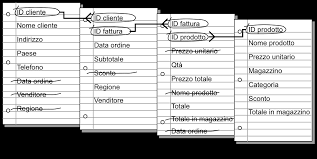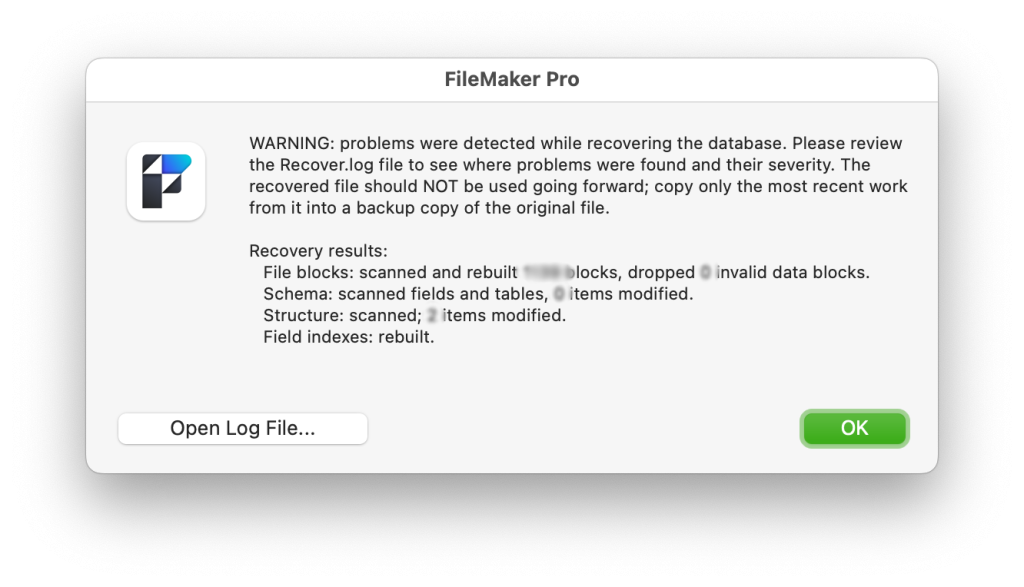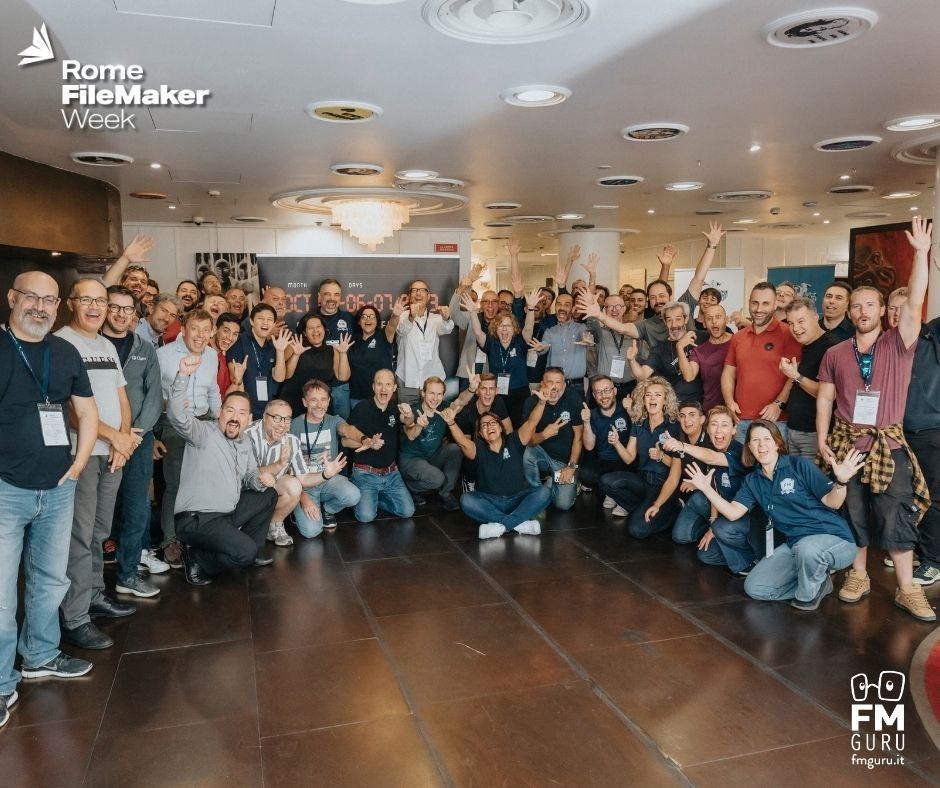
Recently, a group of amateur archaeologists made an extraordinary discovery in Lincolnshire, England: a rare Roman dodecahedron. This enigmatic object, with its twelve faces and holes of varying sizes, has puzzled scholars for centuries. Its exact function remains unknown, but some suggest it may have been a ritual or religious object. The discovery of this perfectly preserved and unique dodecahedron prompts us to reflect on the complexity and mystery of historical artifacts.
This is where the parallel we are exploring in anticipation of Rome FileMaker Week comes in: just as archaeologists unravel the hidden secrets of these ancient artifacts, we in the digital world face similar challenges with FileMaker databases.
We explore complex structures, unveil hidden data, and optimize systems to reveal their true potential. During Rome FileMaker Week, themed “Raiders of the Lost FileMaker Database,” we will have the opportunity to delve into this fascinating connection between history and technology.
Let’s see in detail what Roman artifacts and FileMaker databases have in common!
1) Mystery and Discovery
Roman Artifacts: The Roman dodecahedron, with its twelve faces and holes of varying sizes, is an object shrouded in mystery. Its function remains unknown, arousing curiosity and various theories.
FileMaker Databases: Like archaeologists deciphering the use of ancient artifacts, database developers often encounter old databases with unclear structures and purposes. Unraveling these mysteries can be as challenging as it is exciting.

2) Historical Context and Modern Application
Roman Artifacts: Artifacts provide valuable information about ancient civilizations, revealing details about daily life, religious practices, and technological innovations.
FileMaker Databases: Modern databases encapsulate valuable historical data. Understanding past database structures and data management practices can help better design and optimize those of today.
3) Preservation and Integrity
Roman Artifacts: Preserving artifacts in their original condition is critical for historical accuracy and further study.
FileMaker Databases: Maintaining database integrity ensures data accuracy and reliability. Proper data preservation techniques prevent loss and corruption over time.

4) Interdisciplinary Collaboration
Roman artifacts: Archaeologists often collaborate with historians, chemists, and other experts to unlock the secrets of ancient objects.
FileMaker Databases: Database development and optimization require collaboration among developers, data analysts, and end users to meet diverse needs and solve complex problems.

5) The Role of Technology
Roman Artifacts: Advanced technologies such as 3D scanning and forensic analysis help reveal the details and functions of ancient artifacts.
FileMaker Databases: Modern tools and technologies, such as automated scripts and AI, improve the efficiency and functionality of databases, making data management more effective.
6) Value of Context
Roman Artifacts: The context in which an artifact is found can provide crucial information about its use and meaning.
FileMaker Databases: Understanding the context of data—where it came from, how it was collected, and its intended use—is vital for accurate analysis and effective applications.
7) Unanswered Questions and Theories
Roman Artifacts: Theories about the use of the dodecahedron range from religious object to practical tool, demonstrating the wide range of speculation in the absence of definitive answers.
FileMaker Databases: Similarly, developers often speculate about the intentions behind certain database structures or data entries, leading to creative approaches to problem solving.
8) Educational Value
Roman Artifacts: Artifacts educate us about historical societies, their innovations and ways of life.
FileMaker Databases: Analyzing and understanding database systems can educate users about data management principles, improving their technical skills and knowledge.
9) Importance of Continuous Exploration
Roman Artifacts: Ongoing archaeological excavations continue to uncover new artifacts, deepening our understanding of ancient civilizations.
FileMaker Databases: Continued exploration and updating of database technology leads to new features and capabilities, improving data management practices.
10) Community and Knowledge Sharing
Roman artifacts: Discoveries are often shared with the public through museums and exhibitions, fostering a sense of community and shared heritage.
FileMaker Databases: Sharing knowledge through conferences like Rome FileMaker Week helps build a community of experts and enthusiasts who learn from each other and advance the field together.

So, dear adventurers, are you ready to explore “lost FileMaker” databases? Join us at Rome FileMaker Week and take part in this epic quest to uncover hidden gems in both history and technology. Let’s dig deep, explore the unknown, and maybe solve the great puzzles of our time.
